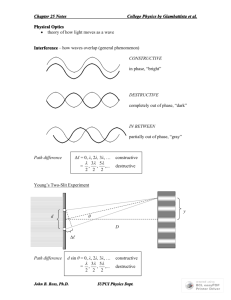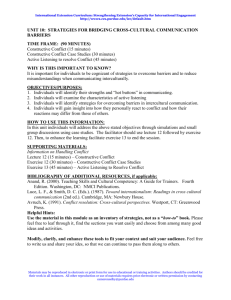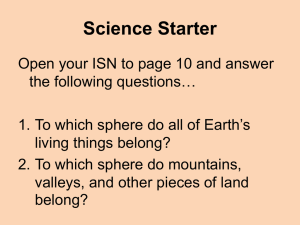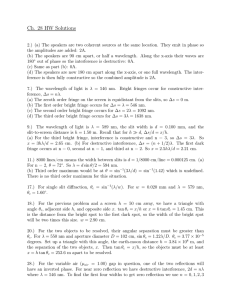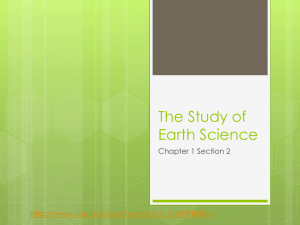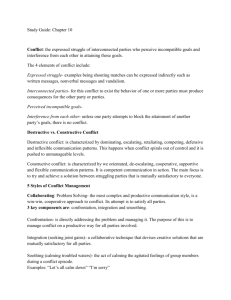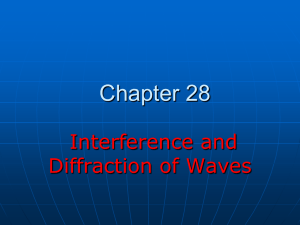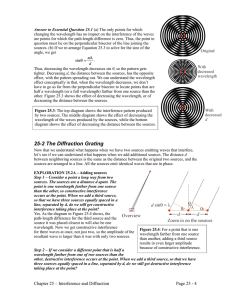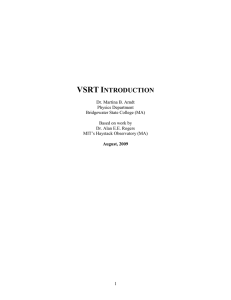Document 10381446
advertisement
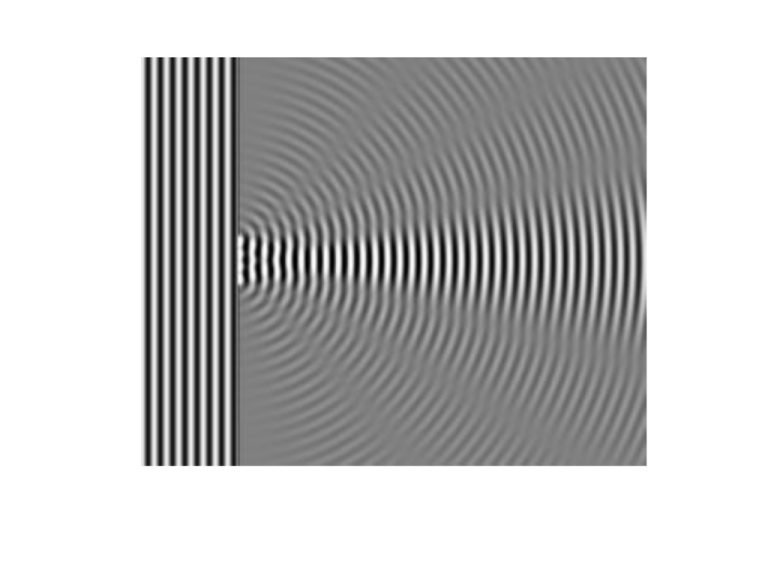
Whenever two portions of the same light arrive at the eye by different routes, either exactly or very nearly in the same direction, the light becomes most when the difference of the routes is any multiple of a certain length, and the least intense in the intermediate state of interfering portions; and this length is different for light of different colour. T. Young from a paper to the Royal Society in 1802 Interference phenomena ↔ Pathlength difference ● P s1 q d s2 dsinq Along the center line, it is obvious that the distances to two sources are identical. |r1-r2| = 0 and constructive int. |r1 - r2| = dsinq = ml = (2m + 1)l/2 Constructive Int. Destructive Int. Ds =d(x/h) = ml (0, ±l, ±2l, …) Constructive (m+1)l/2 (±l/2, ±3l/2,…) Destructive d(x/h) = ml x = m(h/d) l for constructive int. 3 2 1x 0 d h 2nd-order bright fringe 2nd bright fringe 1 2 3 Coherent light sources by splitting 3rd 2nd 1st 0th Huygen’s principle: Each point on a wavefront acts as a new Source of identical waves. Diffraction Grating provides much clearer and sharper interference pattern and a practical device for resolving spectra. Dr = dsinq = ml Constructive d q 632.8 nm red beam of a helium-neon laser through a 600 lines/mm diffraction grating (1 mm/ 600) sin a= (n=1)(632.8 nm) Then sin a ~ distance between spots / distance to screen. HITT: A laser through a grid of slits, 0.0625 mm each, 0.25 mm separations between their centers. This picture was taken in the teaching labs of the Ben Gurion University Physics Department Find wavelength of the light (in the few hundred nm range)? X ray Crystallography • Q: How do you determine the atomic structure of a crystal? A: interference patterns Panel A, peaks vs. angle (ignore panel B, that has to do with their determination of the structure) material: pyrite (FeS2) X-ray diffraction Nature Materials 5, 647 - 652 (2006)

